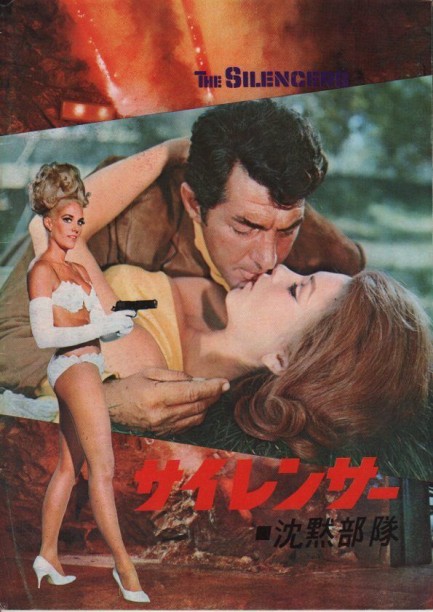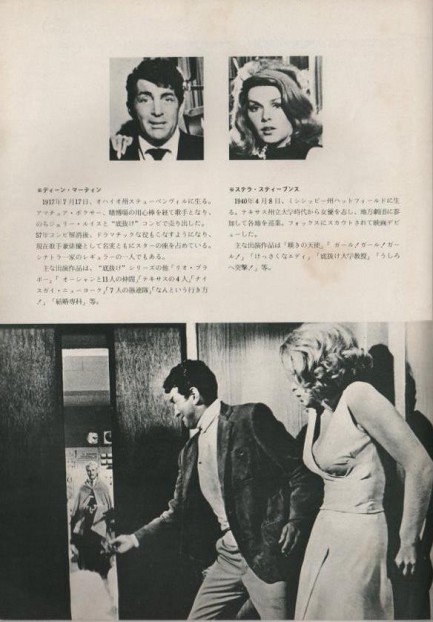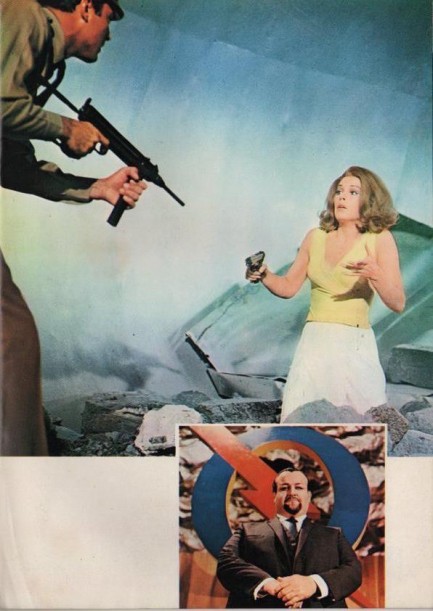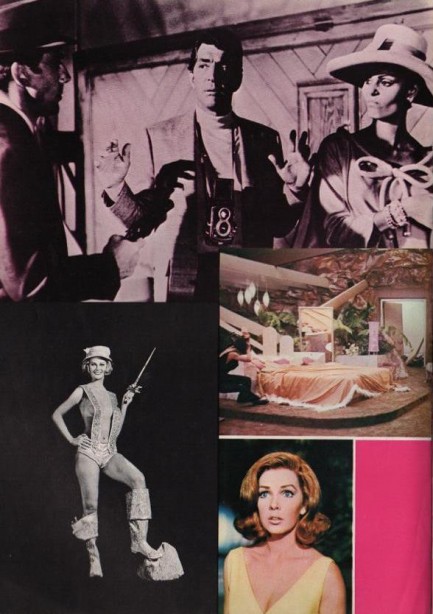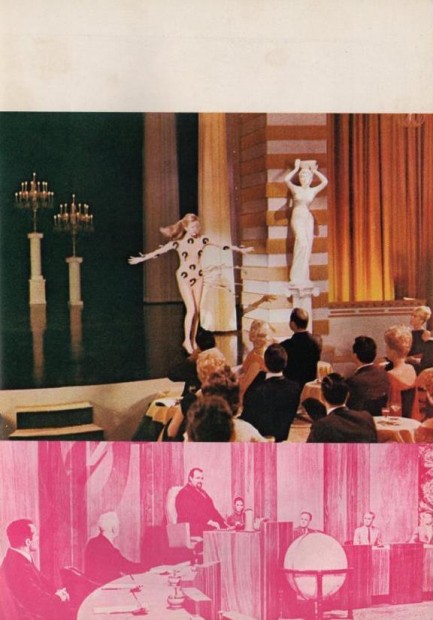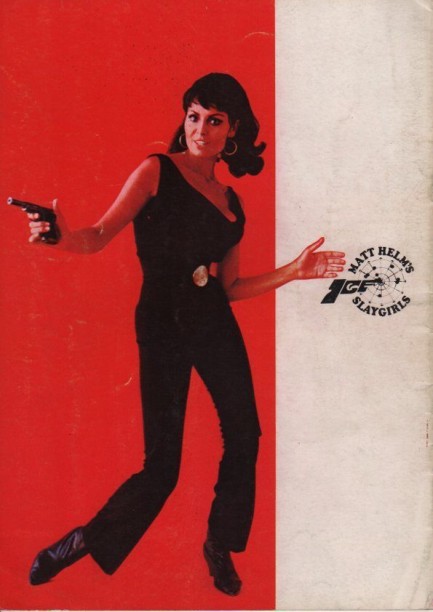 Umpteenth Bond riff is cuter than most but a lot dumber too. 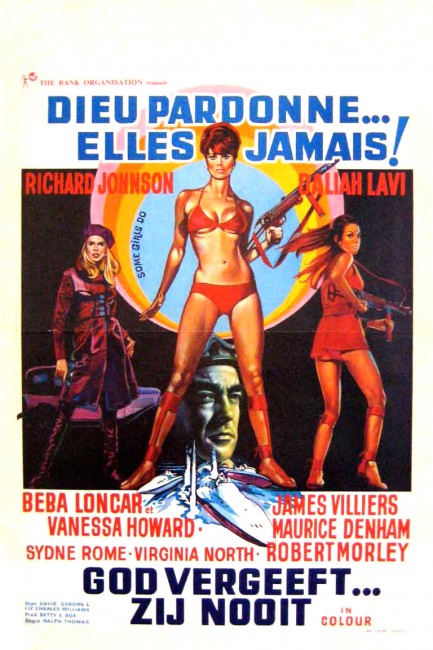
The Bond franchise could be the most imitated in cinema history. Most of the copycats came during the late 1960s. The serious ones are often unwatchable, but the tongue-in-cheek varieties sometimes manage to entertain. The most entertaining aspect of the Bond inspired Some Girls Do is the theme song by Lee Vanderbilt. Which is not a knock on the movie. It's just that the song is that good. We immediately went searching for a version to have as our very own but there isn't one, at least not one from the film, or one without serious sound issues. We're going to keep looking, though. The movie has another plus—the above promo poster made for Belgium, where it was known by the Dutch title God vergeeft... zij nooit, and the French title Dieu pardonne... elles jamais!
As far as the actual film goes, it stars Richard Johnson as Hugh Bond—er, we mean Hugh Drummond—and he's sent to deal with unknown forces determined to stop the development of the world's first supersonic airliner. You get beautiful women with shady intentions, spy gadgets of dubious efficacy, robot femmes fatales, and a super villain hiding in his (almost) impregnable lair. Johnson is reprising his role from 1967's Deadlier than the Male, another pretty cute, marginally enjoyable Bond copy, but here sequelitis has set in—which is to say, this movie is not quite as charming, nor as funny, nor as thrilling as the first. So ultimately, while some girls do, some movies don't, and most viewers shouldn't. Not unless you have a seriously unquenchable ’60s spy movie thirst. If so, Some Girls Do might do the trick. 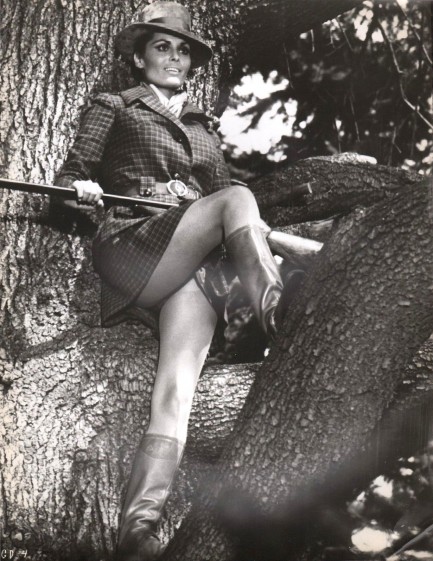 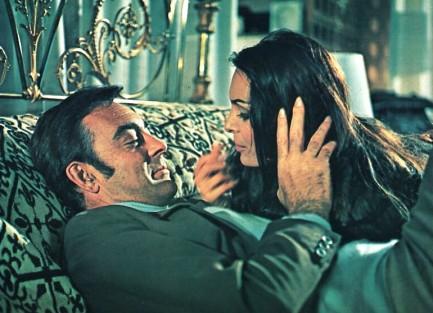 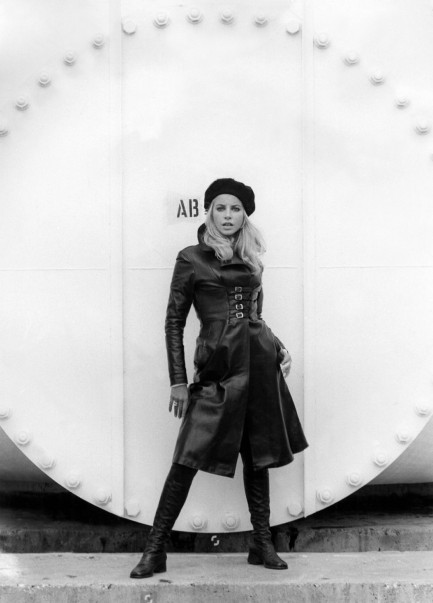 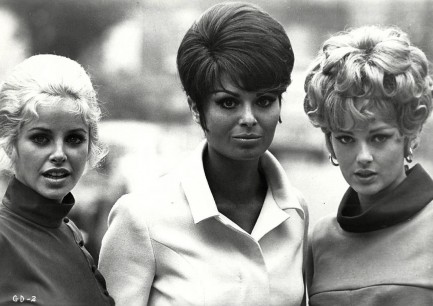 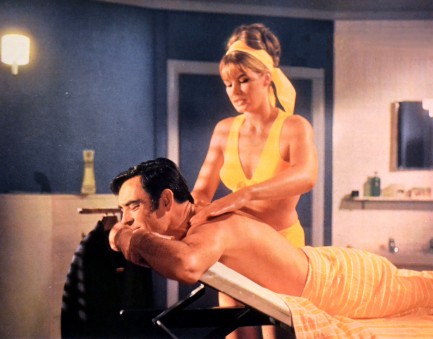  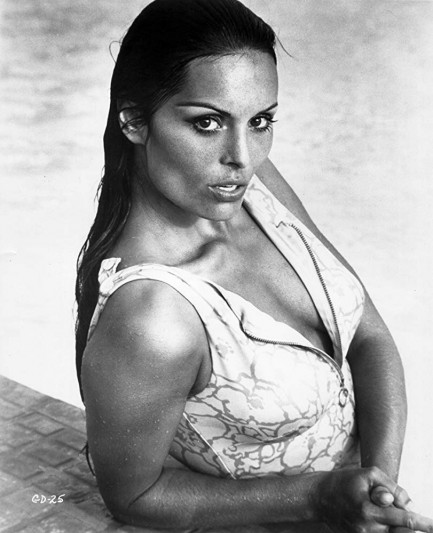 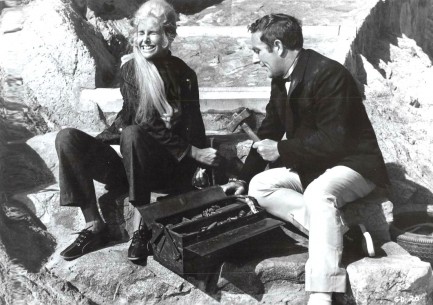 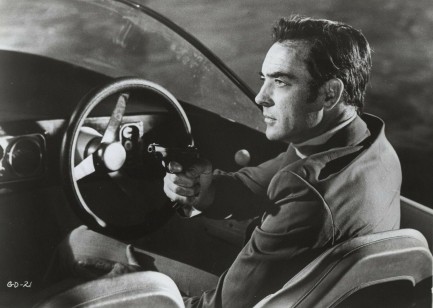 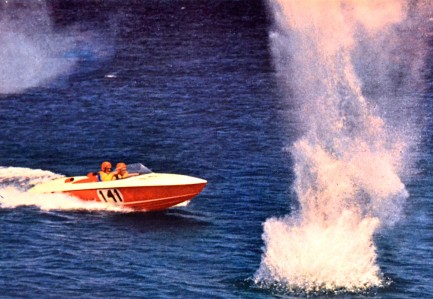 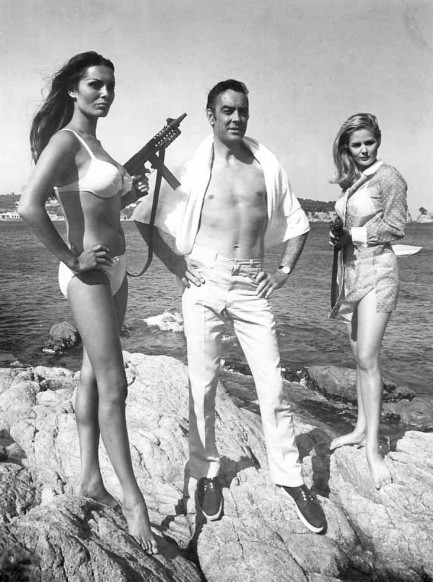 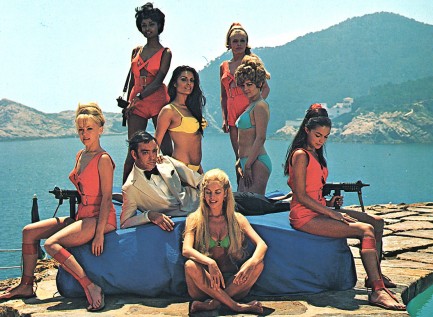
 When she tells someone to sleep well she means forever. 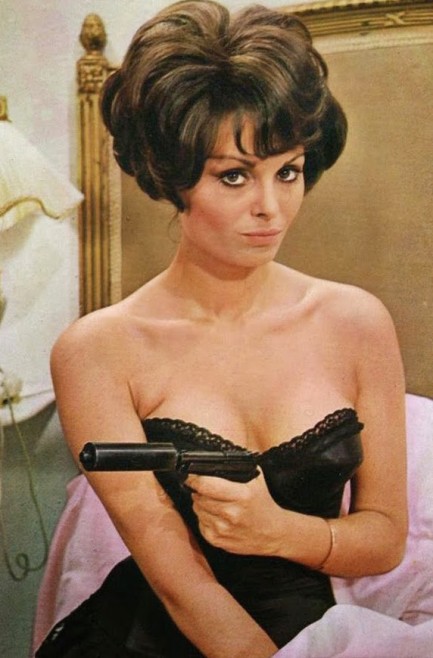
Above, a colorized shot of Israeli actress Daliah Lavi in character as Princess Natasha Romanova in 1966's The Spy with a Cold Nose, which as you can probably guess is about a dog turned into a spy. Silly of course, but this was during the heyday of spy spoofs. In fact, Lavi was in several others—Some Girls Do, Casino Royale, Schüsse im 3/4 Takt, aka Operation Solo, and The Silencers. All were ridiculous. There's nothing ridiculous about Lavi, though. She looks ready to kill in her black lingerie.
 It’s possible to have too many Bonds. 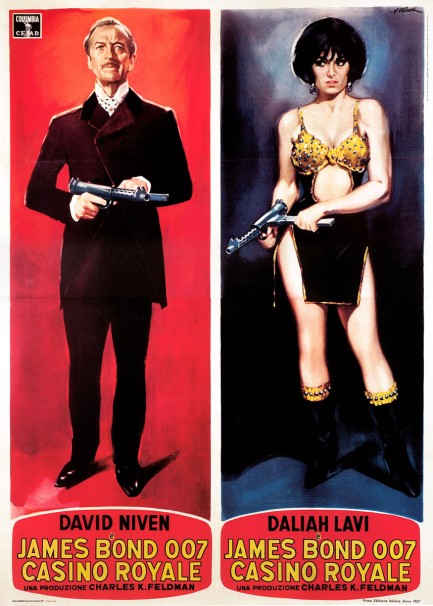 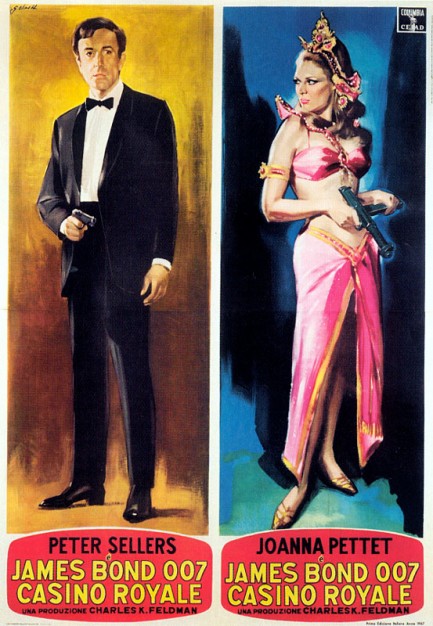 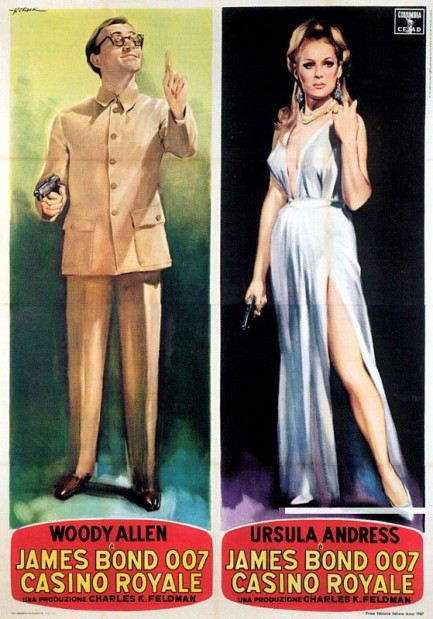
1967’s Casino Royale wasn’t a global Christmas movie in the sense that today’s films are, however it did premiere Christmas week in ten European countries, as well as today in Japan. The movie wasn’t good. Basic idea: Sean Connery is an imposter, so the real James Bond in the form of David Niven is coaxed out of retirement, and he comes up with a plan to confuse his arch enemies SMERSH by renaming all British agents—male and female—James Bond. Time’s review of Casino Royale was headlined “Keystone Cop Out,” and The New York Times’ Bosley Crowther was just as scathing, noting that “since it’s based more on slapstick than wit, with Bond cliché piled upon cliché, it tends to crumble and sprawl.”
But one thing about holiday blockbusters—past and present—is that they’re expensively promoted. The many posters produced to sell Casino Royale were top notch. A U.S. poster painted by the legendary Robert McGinnis remains one of his most iconic pieces, but we also like these Italian quattro foglio promos painted by the extensively and expensively collected Giorgio Olivetti. We saw a set of these asking $8,500 at an auction site. By contrast, below are several U.S. promos, not paintings but photo-illustrations, on which the film’s secondary players get starring roles. They aren’t nearly as collectible as the movie’s paintings, but they’re pretty, so we’re sharing them as well.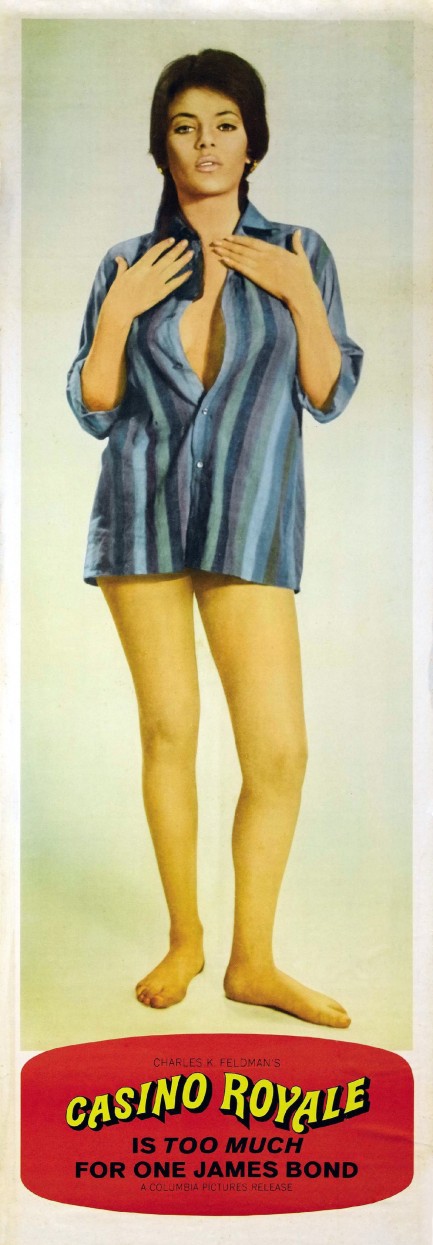 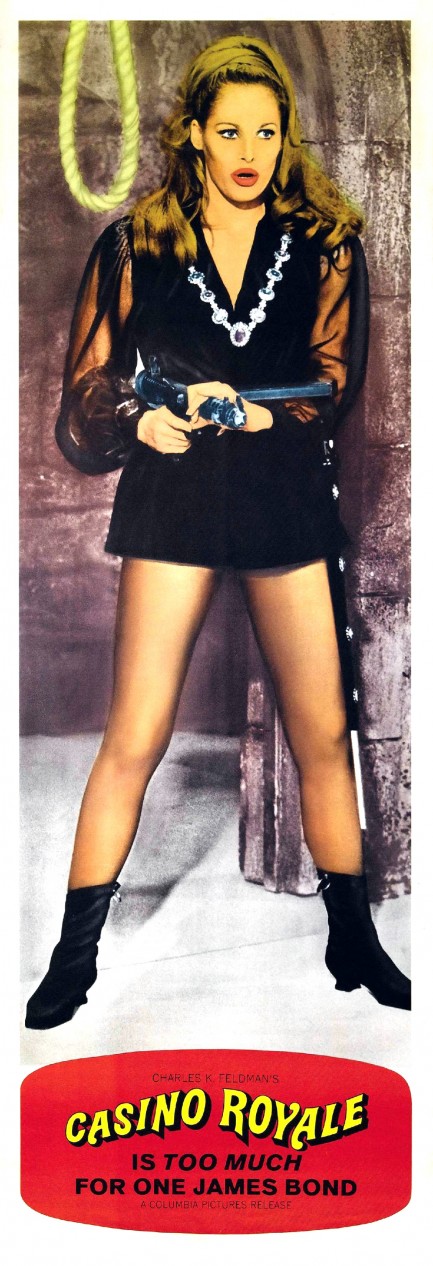  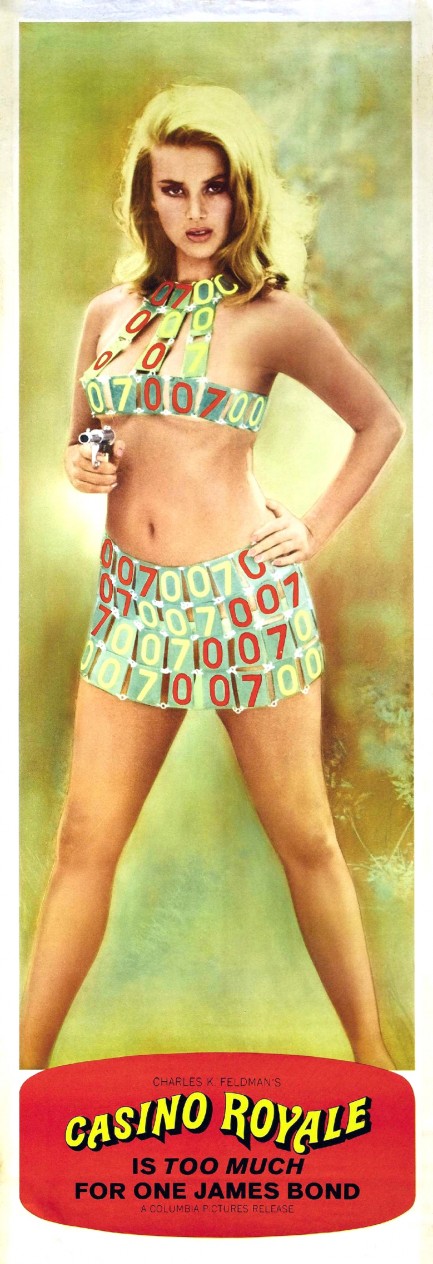 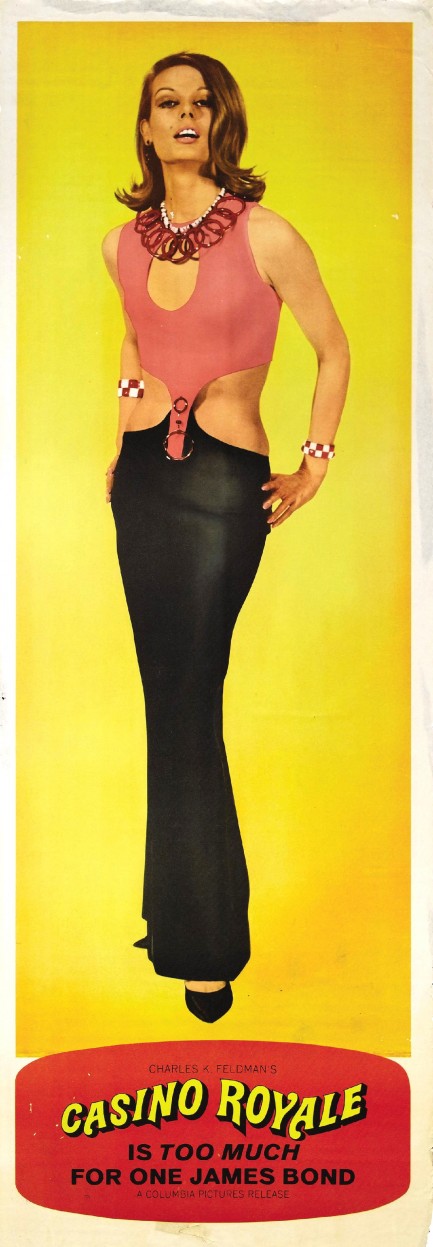 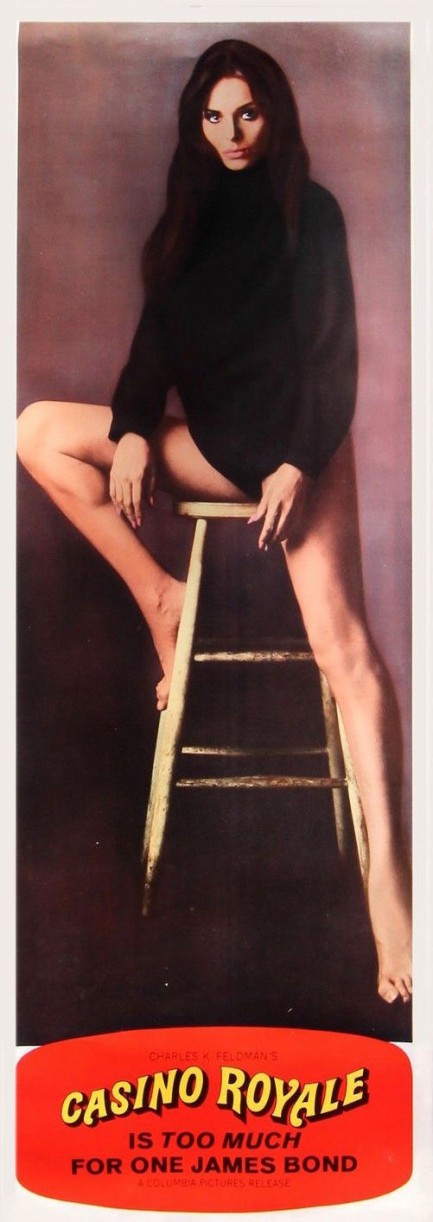
|
 |

The headlines that mattered yesteryear.
1947—Heyerdahl Embarks on Kon-Tiki
Norwegian ethnographer and adventurer Thor Heyerdahl and his five man crew set out from Peru on a giant balsa wood raft called the Kon-Tiki in order to prove that Peruvian natives could have settled Polynesia. After a 101 day, 4,300 mile (8,000 km) journey, Kon-Tiki smashes into the reef at Raroia in the Tuamotu Islands on August 7, 1947, thus demonstrating that it is possible for a primitive craft to survive a Pacific crossing. 1989—Soviets Acknowledge Chernobyl Accident
After two days of rumors and denials the Soviet Union admits there was an accident at the Chernobyl nuclear power plant in Ukraine. Reactor number four had suffered a meltdown, sending a plume of radioactive fallout into the atmosphere and over an extensive geographical area. Today the abandoned radioactive area surrounding Chernobyl is rife with local wildlife and has been converted into a wildlife sanctuary, one of the largest in Europe. 1945—Mussolini Is Arrested
Italian dictator Benito Mussolini, his mistress Clara Petacci, and fifteen supporters are arrested by Italian partisans in Dongo, Italy while attempting to escape the region in the wake of the collapse of Mussolini's fascist government. The next day, Mussolini and his mistress are both executed, along with most of the members of their group. Their bodies are then trucked to Milan where they are hung upside down on meathooks from the roof of a gas station, then spat upon and stoned until they are unrecognizable. 1933—The Gestapo Is Formed
The Geheime Staatspolizei, aka Gestapo, the official secret police force of Nazi Germany, is established. It begins under the administration of SS leader Heinrich Himmler in his position as Chief of German Police, but by 1939 is administered by the Reichssicherheitshauptamt, or Reich Main Security Office, and is a feared entity in every corner of Germany and beyond. 1937—Guernica Is Bombed
In Spain during the Spanish Civil War, the Basque town of Guernica is bombed by the German Luftwaffe, resulting in widespread destruction and casualties. The Basque government reports 1,654 people killed, while later research suggests far fewer deaths, but regardless, Guernica is viewed as an example of terror bombing and other countries learn that Nazi Germany is committed to that tactic. The bombing also becomes inspiration for Pablo Picasso, resulting in a protest painting that is not only his most famous work, but one the most important pieces of art ever produced.
|

|
|

It's easy. We have an uploader that makes it a snap. Use it to submit your art, text, header, and subhead. Your post can be funny, serious, or anything in between, as long as it's vintage pulp. You'll get a byline and experience the fleeting pride of free authorship. We'll edit your post for typos, but the rest is up to you. Click here to give us your best shot.

|
|

















